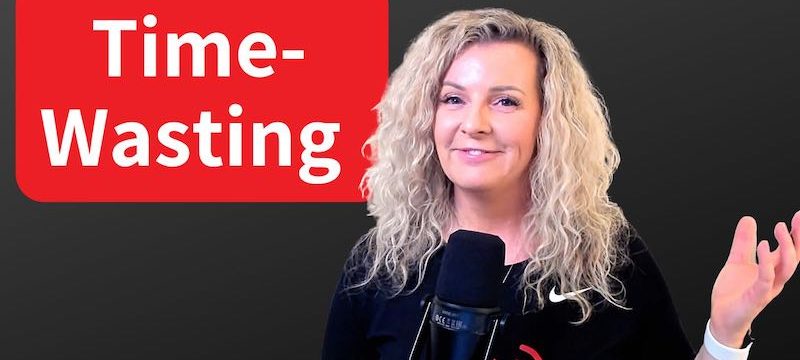Players and teams may try to waste time when they are preserving a lead or a favourable scoreline. We'll show you how to apply the time-wasting rule so that the game keeps flowing!
Transcript
Wondering about wily works to waste time? Walk with us as we unwind it all on this #RuleyTuesday. Let’s do this!
Hey friends! I’m Keely Dunn of FHumpires back with a hot take on one hockey rule. We love making these segments as much as you love to watch them so consider signing up for a $3/mo. fhu3t Green membership so we can keep sharing the Ruley goodness. In return you’ll receive forever access to the back #WhatUpWednesday catalogue and many virtual hugs, so enroll today!
Rule 9.17 – Time-Wasting
Today we’re delving into the very last rule in s.9 which can get overlooked but is super important to producing a free-flowing game at the pace the teams are capable of playing at. Rule 9.17 reads:
9.17 Players must not delay play to gain benefit by time-wasting.
Why a Rule Against Time-Wasting?
One of the rare rules that has nothing to do with danger but everything to do with cheater-pants behaviour, the reason this is in the book because with 22 players on a large surface, hockey is a game about time and space. With enough time, any team can remove space from their opposition or, conversely, can take advantage of space if their opposition is late to the party.
Because we only stop time for injuries, cards, penalty strokes and sometimes for penalty corners (depending on whether your local area has varied that rule to fit within booking time constraints), our game is vulnerable to teams eating time off the clock when they want to preserve a lead or otherwise favourable scoreline. That means umpires need to be aware right from the get-go what tempo the teams are playing at and basically ensure that continues throughout the match, regardless of the scoreline.
How Do Players Waste Time?
There are two main ways players can waste time: taking longer than before to put the ball into play, or preventing the opposition from putting the ball into play when they’d like to. We’ll look at examples of these in turn.
Who's On The Free Hit?
In moments when teams are looking to “slow the game down”, umpires need to be ready for teams who suddenly struggle to sort out who amongst their 10 field players should take a free hit. Being proactive early in a match can communicate your standards and confirm to players that you aren’t going to be fooled by such silliness.
Other sudden bouts of confusion can erupt when a team has been clearly awarded a free hit but continue to play as if they don’t know they haven’t been given advantage, or can’t figure out from where on the pitch a free hit needs to be taken, like we see in this clip.
It’s a powerful tool in these cases to actually stop time with your whistle as soon as you realize there are hijinks being perpetrated, and then use the time when the clock is stopped to move the ball to where it needs to be and warn the offending team. If done early enough, this can actually have the effect of putting time back ON the clock because the reasonable time you would have allowed to run off letting the players get in position, like for example at a penalty corner, isn’t allowed.
Reversing the Free Hit
When that kind of remedy isn’t available or won’t be enough to reset the proverbial scales of justice, a card could be issued, or a reversal of the free hit given so the opposing team is actually given possession of the ball. You’re going to want to use this one sparingly and only when the other two methods are insufficient, like at the end of a game or end of period.
Let’s turn to the other variety of time-wasting: stopping the opposition from playing the ball. If you’re umpiring a match where the players are coached to take free hits as quickly as possible “just in case it’s theirs”, it’s their responsibility to actually know whether the ball truly is in their possession, so don’t be tricked into protestations of innocence. If you’re communicating clearly with great whistle timing as showing clear signals, you can intervene according to level of match in front of you and on your control ladder to deal with players who play the ball after the whistle.
Occasionally, players can be really sneaky and instead of interfering with the ball that’s in play, they can try to slow down proceedings by bringing a ball that’s left the pitch back into the field, forcing the umpire to hold up a free hit in order to deal with two balls being on the pitch.
Support fhu3t
Did this winding wander wipe out your wavering on time-wasting? Welt the like button, and work it out in the comments below. If you want, wind your way to fhu3t.com and whip out $3 for a monthly FHU Green Third Team membership. We would be bewitched!
Chau for now!
#tuesdaytip #hockey #fieldhockey #hockeyumpire #fieldhockeyumpire #rules #umpirelife #thirdteam #FIH #FIHumpire #rulesofhockey #rulesoffieldhockey #hockeyumpiring #fieldhockeyumpiring

Leave a Reply
You must be logged in to post a comment.